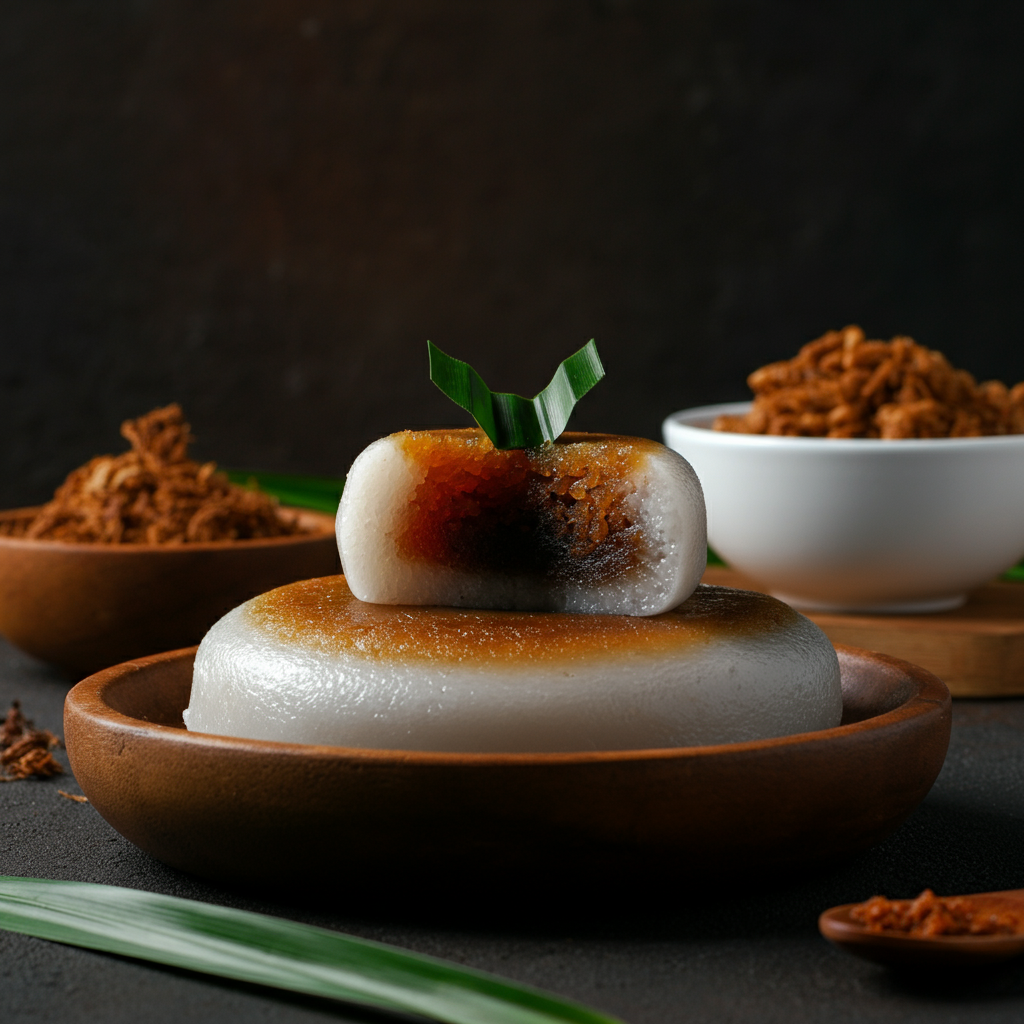Wajik
Brunei
A glutinous rice cake cooked in palm sugar.

Origins and History
Wajik, a beloved sweet treat in Brunei, boasts a history deeply intertwined with the nation's rich culinary heritage. Its origins are likely rooted in the ancient traditions of Southeast Asia, where glutinous rice and palm sugar have long been staples. While precise historical records are scarce, the dish's enduring presence in Brunei suggests a long and cherished history, passed down through generations of families and communities. The use of readily available local ingredients, such as glutinous rice and nipah palm sugar, points to a development that is deeply connected to the Bruneian landscape and its resources. Its longevity speaks to its enduring appeal and its integration into the fabric of Bruneian life.
Cultural Significance
Wajik holds significant cultural importance in Brunei, often featured during festive occasions, celebrations, and special gatherings. It’s a symbol of togetherness and shared joy, frequently served during Hari Raya Aidilfitri (Eid al-Fitr), weddings, and other significant milestones. The meticulous preparation of wajik reflects the care and attention given to hospitality within Bruneian culture. The sweet treat's presence serves as a focal point for communal bonding, highlighting the importance of sharing food and celebrating together. Its sweet taste and satisfying texture contribute to the overall festive atmosphere and leave a lasting impression on both locals and visitors alike.
Traditional Preparation
The traditional preparation of wajik is a labour of love, demanding patience and precision. It begins with soaking the glutinous rice until it becomes soft and pliable. The rice is then steamed until perfectly cooked, achieving a unique texture that is both sticky and chewy. Meanwhile, a rich syrup is made by simmering palm sugar with water until it reaches the desired consistency. The cooked rice is gently folded into the warm palm sugar syrup, ensuring each grain is evenly coated. The mixture is then pressed into molds, often made of banana leaves or other traditional containers, to shape the wajik into its characteristic form. Once cooled, it’s ready to be enjoyed, its sweetness a testament to the dedication invested in its creation.
Regional Variations
While the fundamental recipe of wajik remains consistent throughout Brunei, subtle regional variations can be observed. The type of palm sugar used might differ slightly from one region to another, leading to variations in the final flavor profile. Some families or regions might add a pinch of salt to balance the sweetness, or incorporate pandan leaves for an aromatic twist. These minor adjustments reflect the diverse culinary traditions within Brunei, showcasing the adaptability of this beloved dish while maintaining its core identity.
Modern Interpretations
In recent times, wajik has seen some modern interpretations, although the core ingredients and methods largely remain untouched. Some cooks experiment with adding nuts, such as peanuts or cashews, to enhance the texture and flavor. Others might incorporate coconut milk for a creamier, richer taste. These variations demonstrate the evolving nature of culinary traditions, showcasing how a classic dish can adapt to modern tastes without losing its essence. However, the traditional method continues to be highly valued and practiced, preserving the authentic flavors and cultural significance of this Bruneian delicacy.